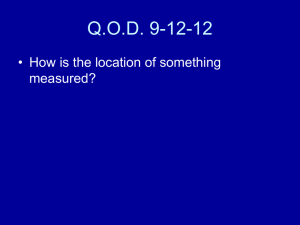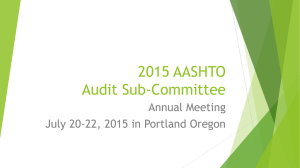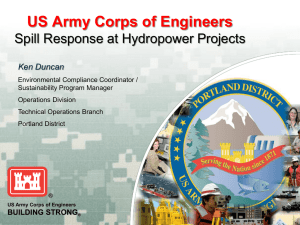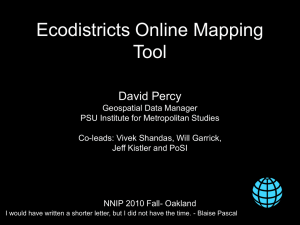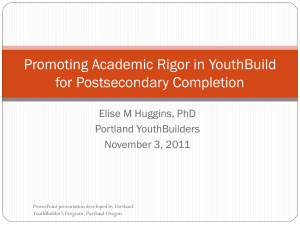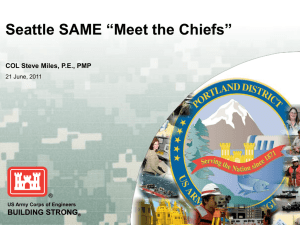Risk-MaPP A cGMP Driver for Contained Equipment and Facility
advertisement
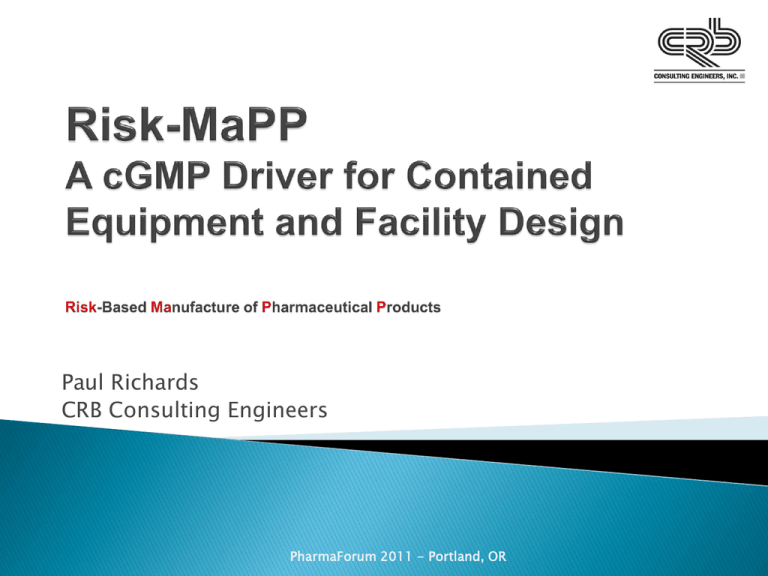
Paul Richards CRB Consulting Engineers PharmaForum 2011 - Portland, OR I am not an Industrial Hygienist I am a Chemical Engineer who is PASSIONATE about containment Senior Process Engineer for CRB Consulting Engineers 23+ years in chemical and pharmaceutical industries ◦ Formerly Sr. Principal Engineer with Pfizer (11+ years) Extensive capital project experience in API and OSD manufacturing facilities Designed, installed, and tested many successful containment systems Steering Committee - ISPE Containment CoP Board of Directors – ISPE New England Chapter BS Chemical Engineering / MS Management PharmaForum 2011 - Portland, OR What is Risk-MaPP How Risk-MaPP relates to Containment Practical solutions PharmaForum 2011 - Portland, OR A guide to managing risks associated with cross contamination ISPE Baseline Pharmaceutical Engineering Guide ◦ Rolled out in Fall of 2010 ◦ Six years in development ◦ FDA and EMA reviewed and approved “meant to assist pharmaceutical manufacturers in the design and construction of new and renovated facilities that are required to comply with the requirements of the US FDA.” PharmaForum 2011 - Portland, OR Risk-MaPP provides a scientific risk-based approach, based on ICH Q9, to manage the risk of cross contamination in order to achieve and maintain an appropriate balance between product quality and operator safety. Focus on science based risk analysis to design and operation versus emotional reactions PharmaForum 2011 - Portland, OR Protecting the PATIENT through quality systems to manage the risk of cross contamination PharmaForum 2011 - Portland, OR PharmaForum 2011 - Portland, OR Mix-up ◦ Cross contamination by using wrong API, excipients, product contact materials, equipment, etc… Equipment Retention / Residue Carryover ◦ Material that remains in product contact after cleaning due to failure or inadequate cleaning Mechanical Transfer ◦ Particulate transfer on clothing/feet from operators and equipment alternating between 2 or more processing areas Airborne Transfer ◦ Cross contamination via airborne migration of particulates PharmaForum 2011 - Portland, OR PharmaForum 2011 - Portland, OR cGMP versus Industrial Hygiene Patient versus the Operator Different exposure routes / pathways IH monitoring targeted at worker exposure not cross contamination ◦ How do you meaningfully correlate IH data from an air sampling pump and filter? How do you validate containment if it is a cGMP control? PharmaForum 2011 - Portland, OR Sterile Manufacturing ◦ RABS ◦ Isolators Highly hazardous (potent) compounds ◦ Containment is effective to protect workers as well as to reduce risks of cross contamination via mechanical transfer or airborne transfer PharmaForum 2011 - Portland, OR Redundant electronic verification of materials Redundant manual checks Color coding Bar coding and RFID of materials & equipment Locked cages to store APIs with chain of custody Transfer and utility connect technologies that are unique to the process Process Analytical Technologies (ie. NIR) Separate dispensary areas Separate raw material staging areas PharmaForum 2011 - Portland, OR Clean to set limits ◦ Base limits on science, risk assessment, statistical analysis ◦ Cleaning validation ◦ Equipment designed for CIP ◦ On-line monitoring / PAT Disposable product contact parts Dedicated product contact parts PharmaForum 2011 - Portland, OR PharmaForum 2011 - Portland, OR Limit transfer of compounds between suites ◦ ie. High Shear Granulation, Milling, and Drying in same suite Segregate work areas to a single product Contain at the Source Close process systems Room airflow Airlocks Gowning procedures Wipe down protocols for mobile equipment Clean mobile equipment in processing room Misting showers Cleaning bays with dirty / clean pass through PharmaForum 2011 - Portland, OR Contain at the Source Close process systems Room airflow Airlock separation to corridor Gowning procedures Wipe down protocols Misting showers Room differential pressures High room air change rates PharmaForum 2011 - Portland, OR • Contain at the source • Avoid technique dependant systems • Focus on transfer systems • Design below the OEL / ADE • Consider ergonomics, cleaning, sampling, waste, material compatibility • Provide redundancy / secondary containment • Engineer out the reliance on PPE PharmaForum 2011 - Portland, OR PharmaForum 2011 - Portland, OR OEB I OEB II OEB III OEB IV OEB V OEL (μg/m3) 10,000 1,000 100 10 50 1 0.1 Local exhaust ventilation Crossflow booth Downflow booth Cone Valve Split Butterfly Valves HicoFlex / EziDock CSV4 Split Butterfly Valves with air extraction Bag Technology Split Butterfly (Glatt SKS / Buck TC) Rapid Transfer Ports (RTPs) 0.01 • • • • • • Well proven in industry Performance: < 0.1 μg/m3 Consists of an alpha (active) port attached to an isolator and a beta (passive) port connected to the portable container The beta is docked and locked to the alpha by rotation before the door can be opened Requires an isolator Vendors • • • La Calhene Applied Containment Engineering Central Research Labs • • • • • • • • • Same basic technology at RTP, but passive attaches to equipment Active fitted with a purpose made glove bag Active made in HDPE to keep light weight Passive flange or bolted Adapt passive with sight glass Pressure cap provides 6 bar-g design Active $12,000 Passive $ 6,000 (SS) Vendor – Heaton Green Containment Primary Vendors • • • • GEA Buck Valve Charge Point Glatt Andocksysteme Types of Split Butterfly Valves • • • • Standard With air extraction shroud Air or Liquid Wash systems Pressure rated or not Primary concern with split butterfly valves! • material on the faces of the valves after undocking PharmaForum 2011 - Portland, OR PharmaForum 2011 - Portland, OR Perform risk assessment to identify steps and controls, prioritize level of risk, and determine corrective actions FMEA format for risk assessment ◦ Severity – the impact on the patient ◦ Occurrence – how often this effect takes place ◦ Detection – how easily the failure can be detected Multiply each factor for a resulting risk priority number (RPN) ◦ S x O x D = RPN Set limits for RPNs ◦ Acceptable ◦ Investigate and remedy ◦ Requires immediate attention PharmaForum 2011 - Portland, OR PharmaForum 2011 - Portland, OR PharmaForum 2011 - Portland, OR The FDA is on board with Risk-MaPP The regulations have not changed, but the FDA will expect all manufacturers’ to “Show us your scientifically sound assessment” to prevent cross contamination and to “justify the level of controls” There are many common engineering controls to reduce risks of potential cross contamination and operator exposure Understand and document your risks and your controls PharmaForum 2011 - Portland, OR PharmaForum 2011 - Portland, OR
